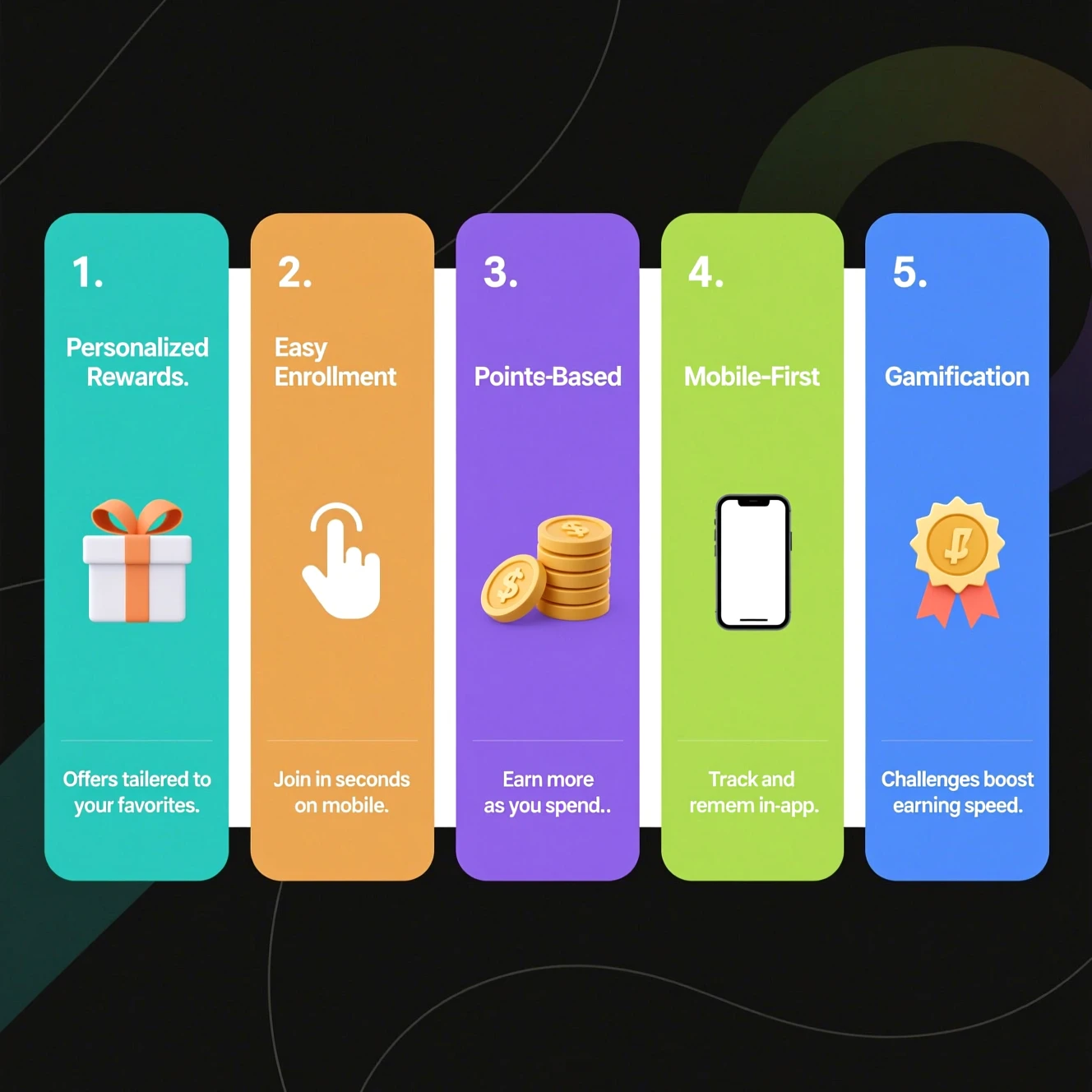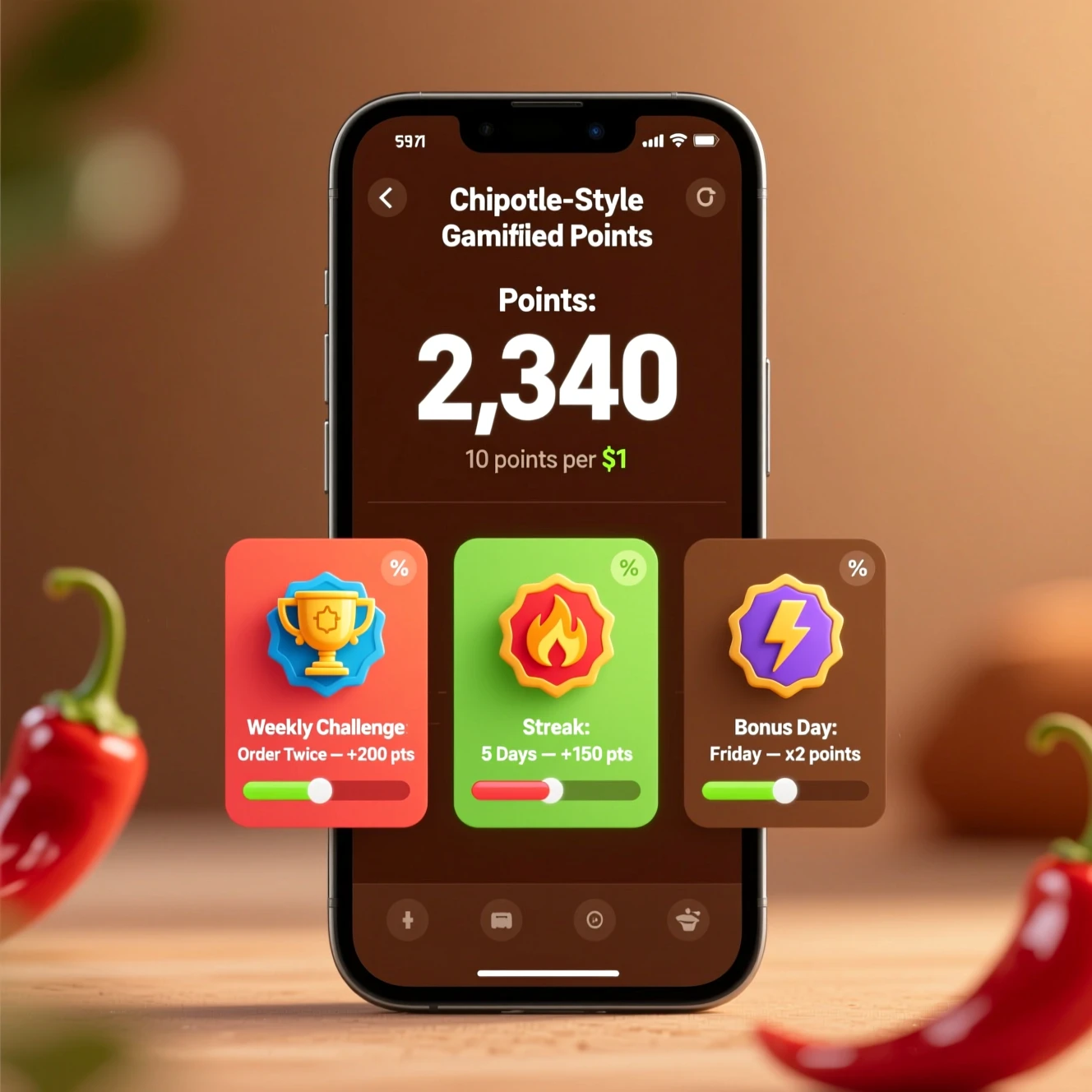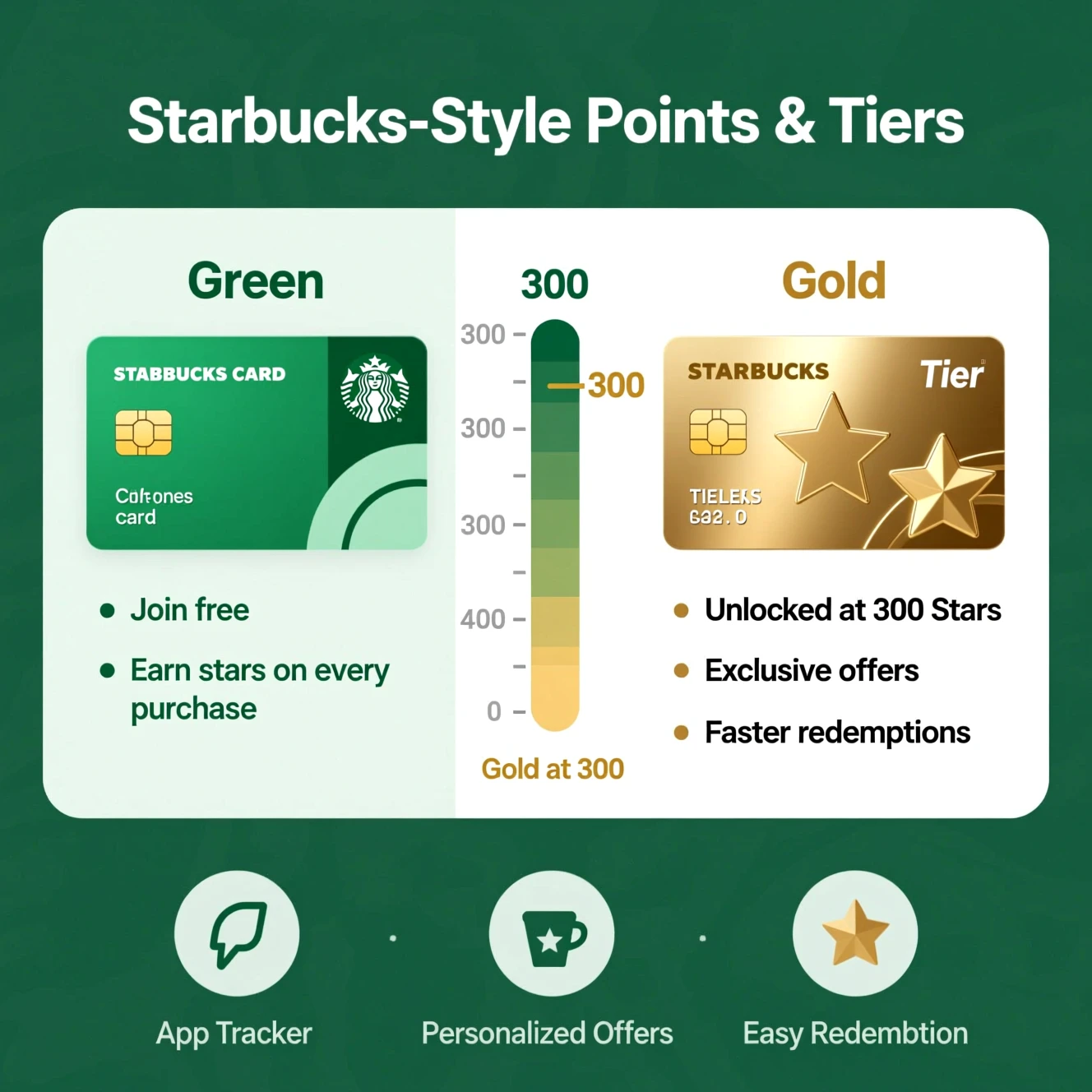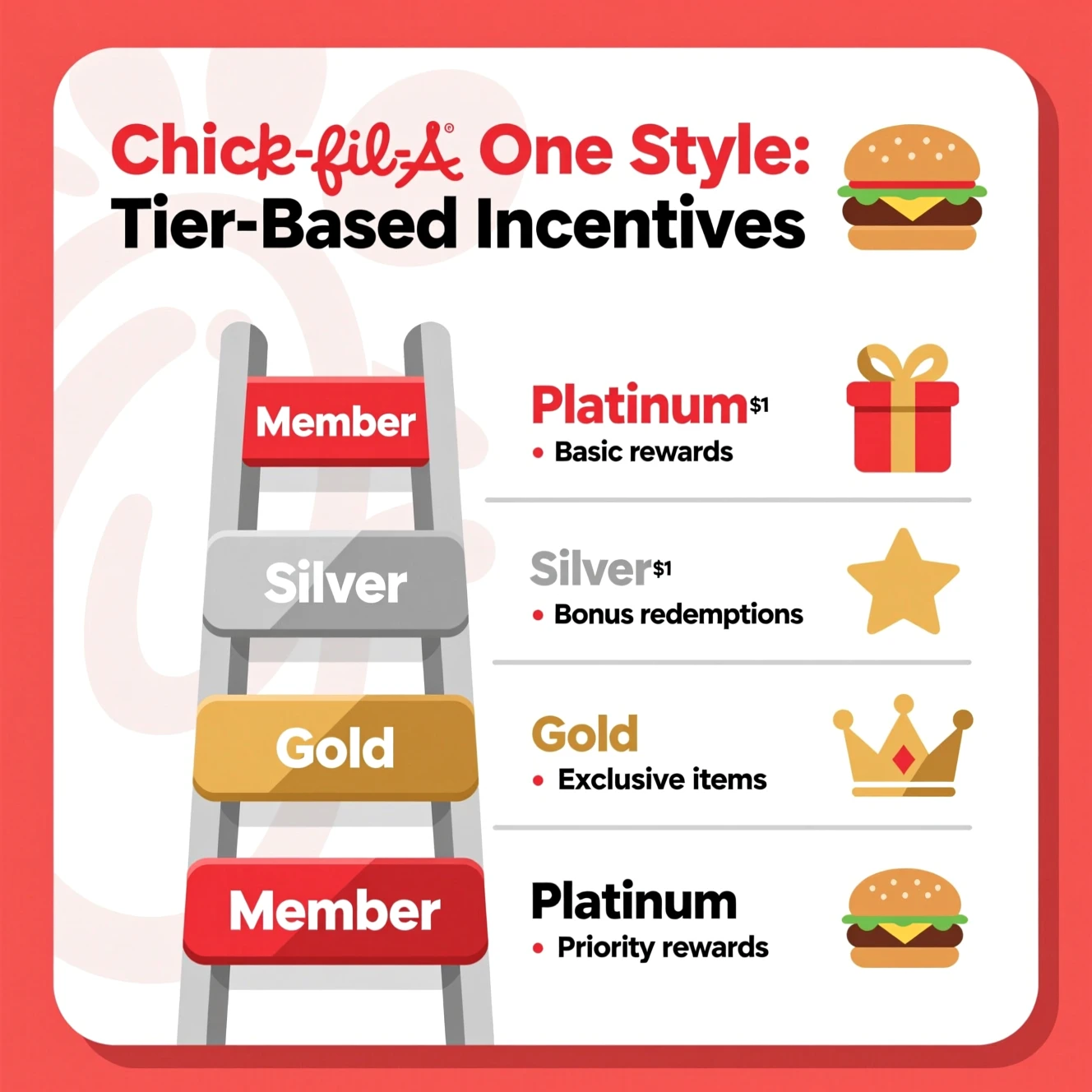Curious about the best restaurant loyalty program? Find out which programs from Starbucks, Chipotle, and Chick-fil-A offer top rewards and ease of use.
Restaurant loyalty programs are crucial for building customer loyalty and encouraging repeat visits. The top programs, such as those from Starbucks, Chipotle, and Chick-fil-A, have set benchmarks in the industry with their own restaurant loyalty program and effective restaurant loyalty software.

These rewards programs reward customers with points and perks while creating an engaging and personalized experience that encourages repeat visits.
Starbucks Rewards is a free program that allows customers to gain points with every purchase, including options for free coffee. The program features:
Personalized rewards boost customer satisfaction, making it a standout loyalty program with personalized offers in the industry.
Chipotle Rewards is a points-based program with the following features:
This approach has significantly contributed to Chipotle’s digital sales, demonstrating the effectiveness of gamified engagement.
Chick-fil-A One uses a tier-based loyalty program to reward customers:
Successful loyalty programs provide substantial value, encouraging repeat visits and increased spending. Simplifying enrollment and reward redemption enhances customer satisfaction and participation.
Highlighting customer loyalty program benefits significantly boosts customer interest and participation in the best loyalty program. Loyalty programs offer valuable incentives that enhance customer loyalty.
Points-based systems are designed to reward customers for their spending, motivating repeat visits through accumulated points. Customers in such programs tend to order more to reach the next milestone of points, effectively increasing their spending.
Participants in Pizza Hut’s Hut Rewards, for instance, earn two points for every dollar spent on food ordered online.
Customized rewards foster a strong emotional connection between customers and the brand, increasing loyalty. Through My Chili’s Rewards, customers can earn personalized rewards such as:
A seamless sign-up process significantly boosts customer participation in loyalty programs. An easy redemption process enhances customer satisfaction and loyalty.

Together, these elements work to increase participation rates in loyalty programs.
Loyalty programs from popular national chains like Starbucks, Panera, and Dunkin’ Donuts have created loyal customer bases by offering appealing rewards and engaging experiences.

These examples demonstrate the impact of well-designed loyalty programs on customer retention and satisfaction.
MyPanera Rewards emphasizes personalization, offering customized rewards that cater to individual member preferences. Members receive rewards tailored to their previous purchases and preferences, making it a top choice for personalized rewards.
Dunkin’ keeps customers engaged in their rewards program by:
This provides a rewarding customer experience for frequent customers and return customers with free food rewards as extra rewards.
Customers can join the Hut Rewards program by signing up on PizzaHut.com and creating an account. The program offers exclusive offers and birthday rewards, making it an appealing option for customers seeking unlimited points and special deals.
Loyalty programs create lasting connections between loyal customers and restaurants, leading to repeat business. Restaurant loyalty programs work to turn casual diners into regular patrons by making them feel recognized and valued.
These programs help customers save money while getting the most value for their money, increasing their satisfaction.
Loyalty programs encourage repeat visits by rewarding loyalty points and stamps for orders. Immediate bonuses, like a significant number of points, can effectively motivate potential customers to join a loyalty system or loyalty scheme.
Customers tend to spend more and order more often when participating in loyalty programs. Approaching reward thresholds incentivizes customers to spend more, increasing the average order value.
Loyalty programs enable restaurants to gather valuable feedback and insights, helping them adapt to customer preferences. Enhanced customer data allows restaurants to implement personalized marketing strategies that resonate with their customer base.
Several key strategies are involved in creating a successful loyalty program. A straightforward structure in the loyalty program encourages more customer participation. Digital loyalty programs enhance convenience by allowing customers to track points and receive updates through an app.

An effortless redemption process is essential, making it easy for customers to enjoy their rewards.
Points-based systems encourage higher spending by rewarding customers to collect points for every dollar spent, redeemable for free food, bonus points, or free drinks, while earning points and tracking total spend through a rewards system and reward points.
Offering high-margin rewards helps maintain profitability while attracting repeat customers. High-margin menu items like sides and drinks, which complement main dishes, are good examples.
Mobile apps enhance the user experience by allowing customers to track their rewards effortlessly and redeem them at checkout. Integrating loyalty programs with a loyalty app facilitates customer engagement and streamlines reward redemption.
Several strategies can encourage customers to enroll in loyalty programs for rewards members. Immediate rewards like points or discounts for new members can significantly increase enrollment rates.
Using various marketing channels like social media and in-store promotions maximizes awareness and encourages sign-ups. Testimonials from satisfied loyalty members can build credibility and trust, encouraging prospective customers to enroll.
Offering 100 free points encourages initial participation and engagement. Immediate rewards create a sense of progress and higher engagement, proving effective for loyalty programs.
Using various marketing channels like social media and in-store promotions maximizes awareness and encourages loyalty program sign-ups. Engaging customers through multiple channels increases interactions and potential loyalty program sign-ups.
Testimonials from satisfied loyalty members can build credibility and trust, encouraging prospective customers to enroll. Effectively using testimonials can significantly boost loyalty program enrollment due to the trust they inspire.
Summarize the key points discussed in the blog post. Emphasize the importance of loyalty programs in fostering customer retention, increasing average spend, and providing valuable customer data. Conclude with an inspiring message for the readers to implement their own effective loyalty programs.
A restaurant loyalty program enhances customer retention, encourages higher spending, and offers insights for tailored marketing strategies. This approach ultimately strengthens customer relationships and drives business growth.
Points-based systems reward customers with points for each dollar spent, which can then be redeemed for rewards like free food or drinks. This approach incentivizes repeat business and enhances customer loyalty.
High-margin rewards are low-cost items, such as sides and drinks, that restaurants can produce cheaply but that customers perceive as highly valuable. Offering these can significantly enhance profitability.
To encourage customers to enroll in your loyalty program, offer immediate rewards upon sign-up and promote the program through multiple marketing channels while highlighting testimonials from satisfied members. This approach creates an attractive incentive that resonates with potential participants.
Using a mobile app for your loyalty program significantly enhances customer engagement and retention by providing an effortless way to track and redeem rewards. This convenience fosters a stronger connection between the customer and your brand.
Copyright 2025 loyaltecards.com, all rights reserved - Website operated by Boostup International PTY LTD ABN: 47607262279